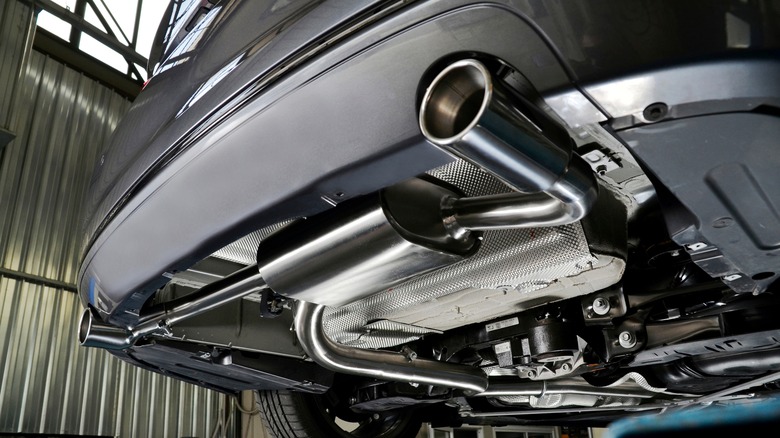The BMW N52 engine was introduced in 2004 and quickly gained a reputation as one of the most reliable and popular BMW engines to ever come out of Bavaria. That’s saying something, as straight-six engines had already been BMW’s bread and butter for almost 90 years by the mid-2000s. In the same year, BMW released another inline-six engine that was nearly identical to the N52 and called the N51.
The N51 and N52 aren’t the only engines in BMW’s lineup that have different names but are virtually the same engine. In fact, there have been quite a few. Other examples include the BMW N20 and N26 engines, as well as the B46 and B48 inline-four engines. Each pair is nearly identical in terms of their appearance and on-paper specs. So, what’s the deal? Well, it boils down to emissions requirements, as some states have stricter rules than others. Emissions regulations can make or break an engine design, as not meeting them can halt the sale of particular cars and engines in certain areas.
That’s what happened with the BMW N52. In 2004, LEV II emissions requirements put in place by the California Air Resources Board (CARB) were rolled out, requiring BMW to make changes to the existing N52 engine in order to sell cars equipped with the engine in SULEV-abiding states. As a result, BMW made some physical and internal tweaks to the N52 and gave it a different name. That’s the N51’s origin story in a nutshell.
BMW ULEV vs SULEV Engines

Zaltrona/Shutterstock
BMW designs engines around specific emissions requirements, with ULEV and SULEV requirements being paramount in the United States. ULEV stands for Ultra Low Emissions Vehicle and SULEV stands for Super Ultra Low Emissions Vehicle. Despite the rather lazy adjective usage, the difference between the two emissions classes is pretty significant.
To be classified as ULEV compliant, an engine must produce less than 2.1g/mi of carbon monoxide and 0.07g/mi of nitrogen oxide after an 11-year — or 120,000 mile — service life. To be classified as SULEV compliant, an engine must produce less than 1.0g/mi of carbon monoxide and 0.02g/mi of nitrogen oxide in the same window of time.
It’s important to note that the majority of U.S. states abided by the more lenient ULEV requirements in 2004. The only states that implemented SULEV emissions requirements were Arizona, Connecticut, California, the District of Columbia, Maine, Maryland, Massachusetts, New Mexico, New York, New Jersey, Oregon, Pennsylvania, Rhode Island, Vermont, and Washington. Some of BMW’s most popular vehicles — including the BMW 328i and 528i — sold in those states between 2004 and 2015 with an N51 under the hood instead of an N52.
How can you tell the N51 and N52 engines apart?
It would be very easy for someone with an untrained eye to think that the N51 and N52 are the same engine. With the hood open, there are only a couple of signs that can tip you off. One of the easiest ways to determine if a BMW has an N51 or an N52 engine is by checking the vehicle emissions control information sticker on the underside of the hood. The second box from the top lists the emissions requirements that the engine abides by and will list whether the engine is ULEV or SULEV compliant.
Moving on to the engines themselves, the only visible difference between the N51 and N52 is the radiator design. The SULEV radiator found on the N51 requires an additional monitoring sensor that can be seen mounted on the inside of the radiator itself. That environmental air catalyst (EAC) sensor is absent from the ULEV N52 engine. Apart from the under-hood sticker and tiny sensor on the inside of the radiator, the engines are identical to the naked eye.
Internal differences between the N51 and N52
Outside of the few visible differences between the engines, there are a number of other differences between the N51 and N52 that you can’t see. The most important difference is compression. The N52 has a higher compression ratio of 10.7:1 while the N51 has 10:1 compression, which lowers emissions output. The N52’s higher compression gives it a theoretical edge in terms of performance, but it’s offset by a couple of other tricks employed by the N51.
One of the N51’s advantages is its intake manifold. The N51 features a three-stage DISA variable-length intake manifold which improves throttle response and torque lower in the rev range. Most N52 engines, other than some high-spec variants, lack a variable-length intake manifold, which compensates a bit for the N51’s lower compression. In fact, many enthusiasts who own N52-powered BMWs swap their factory intake manifold with one from an N51 to get the performance benefits.
The two engines feature different aluminum cylinder heads. The N51 also has a reworked crankcase ventilation system, which is the most critical difference between the N51 and N52 in terms of emissions reduction. They also use different cylinder head covers to accommodate those differences. Despite their internal differences, the N51 and N52 produce the same amount of power and torque on paper. Most of the N51’s shortcomings, including its lower compression and altered intake system, are offset by its superior intake manifold and factory tuning. The changes don’t affect the N51’s reliability either, as it’s often quoted alongside the N52 as one of BMW’s most reliable engines.